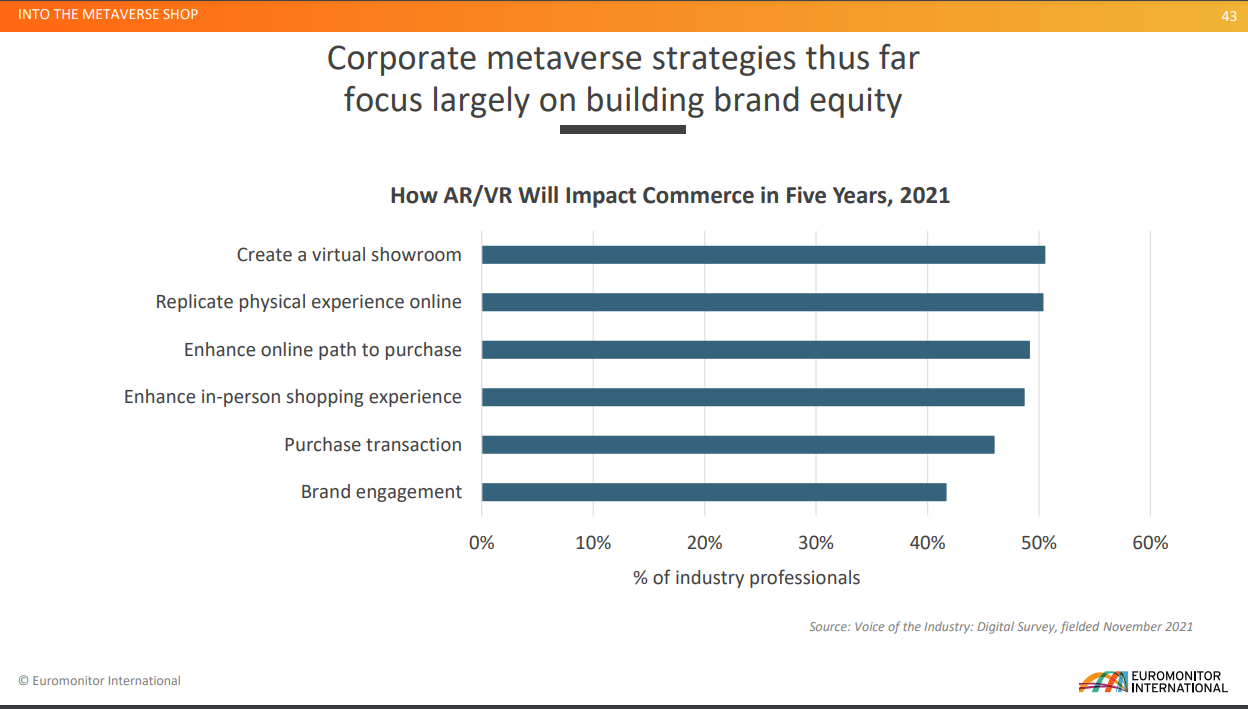What’s next for grocery retail?
When Mark Zuckerberg announced in October that the name of the Facebook company was changing to Meta, he said it was about helping to build the metaverse, a place “where we’ll play and connect in 3D.” For some consumers it was the first they’d heard of this virtual world with avatars of real people interacting in real time. It may sound a way off for produce retail but already some food brands and grocery stores are dipping a toe in by using virtual (VR) or augmented realities (AR). In France, Carrefour is boosting its bond with gamers and encouraging healthier eating by younger people via a collaboration with popular video game Fortnite. The result is Healthy Map, where players must eat healthily in a virtual Carrefour supermarket to recoup points and heal their characters. And South Korean convenience store brand CU has a digital store on Zepeto, Asia’s largest metaverse platform, showing how a brick-and-mortar retailer can build brand awareness and engage with shoppers virtually. So far, AR and VR are mainly being used to enhance brand interactions and replicate the physical shopping experience online. In time, however, they will be leveraged to leap into the virtual world of the metaverse, adding more dimensions to the online shopping experience, market research provider Euromonitor International predicts.
Still some hesitancy about buying fruit online
Thanks to the pandemic, online shopping has become a significant and habitual part of grocery shopping, rising from 7% of the grocery spend in 2016 to 13% in 2021 in the UK. But Kantar UK Consumer Insight Director Joe Shaw Roberts says there are some interesting nuances about how consumers are shopping for produce online. The fact they tend to buy more organic, more premium, slightly more vegetables and slightly less fruit online than when in a store points to a need for reassurance about the quality and condition of items when delivered, he said. This means there is headroom for growth this year if customer-responsive retailers find ways to better address such concerns.
The companies who amass the most useful data and leverage it to maximum benefit will be the winners.
Quick commerce will trigger more impulse purchasing
Consumer desire for convenience across all categories is expected to keep shortening delivery times in 2022. With ultrafast delivery now possible in many cities, urban consumers will use the internet to make an increasing amount of impulse purchases. The proliferation of quick commerce also means dark stores will become the way of the future, Euromonitor says. Many question the longer-term viability of the many new delivery startups, however, and Euromonitor warns their labour practices will come under scrutiny. Meanwhile, many on-demand business models are adapting to changing consumer trends, such as by increasing access to local and regional products, and doing more on sustainability.
Click and collect is set to expand
Despite the phenomenal rise of fast delivery services, Euromonitor says to expect click-and-collect services to also thrive in 2022 and beyond. Retailers are ramping up click and collect not just to meet consumer demand, but also for their own benefit, it says. As North American retailers become more aware of the drawbacks of partnering with third-party delivery services, the industry will see more promotions whereby consumers get a discount on click-and-collect orders. Also in North America, curbside pick-up will gain ground, while pick-up lockers will become more visible throughout Europe and click-and-collect will finally make real inroads into Asia Pacific, it says.
The need to personalise loyalty programmes
A third of global online consumers say the loyalty rewards they earn are not valuable, which means there are opportunities here for retailers who get loyalty right. According to a 2021 Euromonitor survey, shoppers like rewards that help them solve a problem, or provide offers just because they are a customer, make shopping more convenient, say “thank you” for being a customer, keep them up-to-date on the latest news and products, or recommend products based on their needs. In 2022 and beyond, companies will need to move from reactive to predictive customer strategies, using customer data to be able to offer personalised experiences to valued customers, not just points, Euromonitor says. The companies who amass the most useful data and leverage it to maximum benefit will be the winners in this. Similarly, Shaw Roberts says promotional activity is at its lowest level for 15 years in the UK and what instead is needed to bring back customers is “loyalty that pays back in the moment.”
Transition necessary towards green e-commerce
Sustainability has been a buzzword in conventional retail for several years, but Euromonitor says the intensifying climate debate is now accelerating pressure on e-commerce. Green online shoppers are becoming increasingly mainstream and gravitate toward eco-friendly products and communities, making sustainability a differentiator offering competitive advantage. “Retailers need to focus on eco-efficient and ethical practices that reinforce the triple bottom line – people, the planet and profit,” it says.
Sources: various Euromonitor International reports; presentation by Kantar UK Consumer Insight Director Joe Shaw Roberts at the London Produce Show, March 2022






